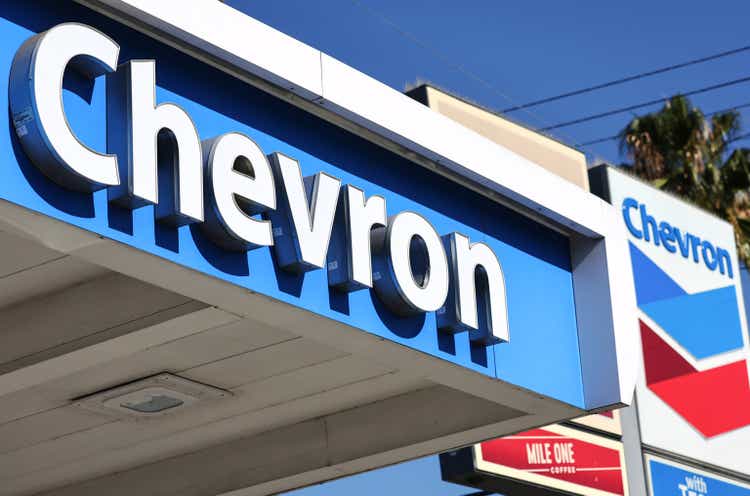
Chevron New Energies, a division of Chevron U.S.A. Inc., is launching a pioneering project: its inaugural solar-to-hydrogen production facility in California's Central Valley. This 5-megawatt facility represents a major achievement in the company's dedication to investigating and creating more sustainable energy solutions.
Transitioning to renewable energy sources is vital in fighting climate change and ensuring a healthier planet for future generations. This project reflects Chevron's commitment to this important effort.
>> RELATED: Chevron Announces Its First Solar-to-Hydrogen Production Project in California’s Central Valley
Chevron New Energies is at the forefront of developing alternative energy solutions. The 5-megawatt hydrogen production facility is being built in California's Central Valley, using existing infrastructure at Chevron's Lost Hills Oil Field in Kern County. The project uses solar power as its main energy source, along with non-potable produced water from the oil field, showing ingenuity in using byproducts for clean energy generation.
"Hydrogen can play a vital role in our journey toward a lower carbon future," emphasized Austin Knight, vice president for hydrogen at Chevron New Energies. "Chevron already offers lower carbon fuels like sustainable aviation fuel, renewable diesel, and others, and this project is expected to expand the portfolio of solutions Chevron could supply to the region. I'm excited about the scalability of this solution. However, our ability to meet growing hydrogen demand and help build hydrogen fueling infrastructure in California to a commercial scale with more widespread adoption will be strongly led by state and federal energy policies that promote new lower carbon energy solutions."

Forging Forward with Innovative Energy Solutions
The main goal of the project is to generate cleaner energy through electrolytic hydrogen production. Electrolysis, a process that uses electricity to separate water into hydrogen and oxygen, provides a more environmentally friendly alternative to conventional hydrogen production methods. The resulting hydrogen is meant to bolster an expanding hydrogen refueling network, potentially reducing carbon emissions in the transportation sector, a major source of greenhouse gasses.
This project fits Chevron's plan to provide cleaner energy solutions while reducing environmental impact. Hydrogen is seen as a promising fuel for a more sustainable future because of its clean-burning properties and potential uses in different sectors. The project can help expand California's hydrogen refueling network, supporting the state's aim for cleaner transportation options.
Project Development and Timeline
The development of the project is expected to span multiple years.
Several factors will determine when commercial operations begin, such as:
- Supportive legislative and regulatory policies
- Final engineering design and permitting processes
- Securing necessary materials
Collaborating with government agencies and local communities is essential for the project's success.
Technological and Environmental Implications
The project uses electrolysis for hydrogen production, a proven technology with room for further improvements. It seeks to show the scalability of the technology, opening the path for broader commercial use in the future. The project holds the potential for substantial environmental benefits by decreasing dependence on fossil fuels and promoting a lower carbon economy.

>> In Company Spotlight: Chevron
Collaboration with Kern Economic Development Corporation
Chevron New Energies teamed up with the Kern Economic Development Corporation (KEDC) to use their knowledge and assistance in developing the project. This partnership is focused on creating important technical and commercial milestones for future large-scale hydrogen production projects. The project is anticipated to boost economic development and create jobs in the Central Valley.
Implications and Future Prospects
Chevron's solar-to-hydrogen project is a big move towards a greener future. This innovative project shows Chevron's dedication to shifting to renewable energy and finding cleaner solutions for a world with lower carbon emissions. The project sets the stage for future improvements in hydrogen production technology and its potential use in many different industries.
Subscribe to the newsletter
Daily decarbonization data and news delivered to your inbox
Follow the money flow of climate, technology, and energy investments to uncover new opportunities and jobs.
Companies
Latest issues
-
The Three-Continent Move That Redefines SAF
Wishing everyone a restful holiday season.🎄🎅🎁 Inside this Issue ✈️ Cathay Goes Global With SAF in Three-Continent Fuel Deal 🧪 Proton Ventures Partners With Barents Blue For Realization Of The Bar...
-
Can One Truck Fix Hydrogen’s Biggest Problem?
Inside This Issue 🚛 Alberta's Shared Truck Model Could Crack Hydrogen Adoption ✈️ ZeroAvia Completes Financing Round 🌾 Frontier And NULIFE Scale New Biowaste Carbon Removal Approach 🔥 WAGABOX® Of ...
-
North America’s Carbon Removal Year in Review: Winners, Losers, Surprises
Inside This Issue 🌎 North America's Carbon Removal Year in Review: The Deals, Policies, and Milestones That Shaped 2025 🚢 Hapag-Lloyd And North Sea Container Line Win ZEMBA Second E-Fuel Tender 🪨 ...
Company Announcements
-
ClimeFi Announces New 85,000 Tonne Procurement Round
In its latest procurement round, ClimeFi has enabled more than US$18m in durable carbon removal purchases across eight removal pathways: Biochar, Bioenergy with Carbon Capture and Storage (BECCS), ...
-
Vallourec, a world leader in premium seamless tubular solutions, and Geostock, a global specialist in underground storage of energy, have signed a Memorandum of Understanding (MoU) to strengthen th...
-
CMA CGM, DHL Step Up Ocean Freight Decarbonization with Biofuel Deal
DHL Global Forwarding and shipping group CMA CGM have agreed to jointly use 8,990 metric tons of second-generation biofuel to reduce emissions from ocean freight. The initiative is expected to cut...
-
Next-Generation Gas Turbine Control System For Thermal Power Plants Completes Functional Testing
Integration of Mitsubishi Power's control technology with Mitsubishi Electric's high-speed data processing technology Supports rapid load adjustments and diverse fuels including hydrogen Tokyo, ...